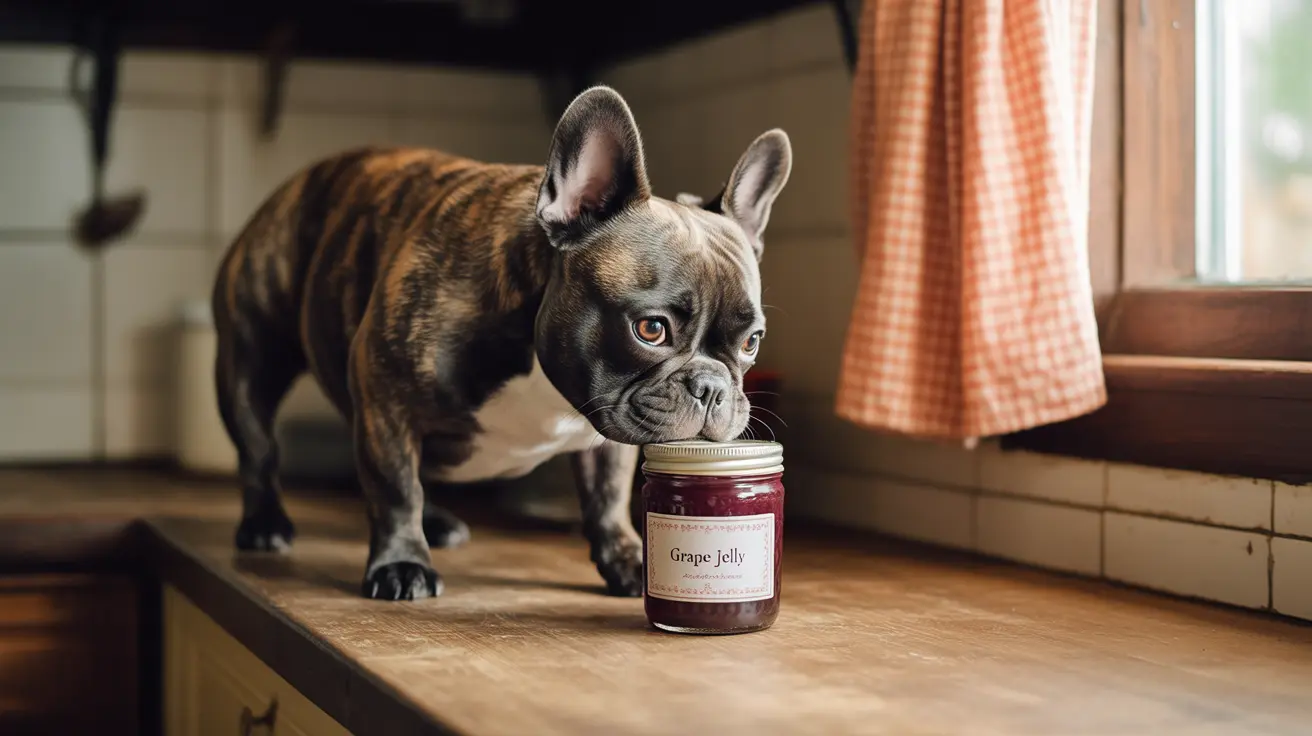If you're wondering whether dogs can eat grape jelly, the answer is a firm and urgent no. Grape jelly, like all grape-based products, poses a serious health risk to dogs. Veterinary experts universally warn against allowing dogs to consume any grape products, including jellies, jams, or preserves containing grape derivatives.
The dangers of grape jelly for dogs extend beyond the well-documented grape toxicity issue. Not only does grape jelly contain potentially toxic grape compounds, but it's also loaded with sugar and sometimes artificial sweeteners that can cause additional health problems for your canine companion.
Understanding the Dangers of Grape Jelly for Dogs
Grape jelly contains concentrated grape products that carry the same toxic compounds found in fresh grapes and raisins. While scientists have recently identified tartaric acid as a likely culprit behind grape toxicity in dogs, the exact mechanism can vary between individual dogs, making any exposure potentially dangerous.
The concentration of grape-derived ingredients in jelly may actually make it more dangerous than fresh grapes, similar to how raisins present a more concentrated form of the toxin. Even a small amount of grape jelly could deliver a concerning dose of grape-derived compounds.
Additional Health Risks Beyond Grape Toxicity
Beyond the grape-specific dangers, grape jelly presents several other health concerns for dogs:
- High sugar content that can lead to obesity and dental problems
- Risk of pancreatitis from concentrated sugars
- Possible presence of xylitol in sugar-free varieties
- Potential digestive upset from artificial preservatives and additives
Signs of Grape Jelly Poisoning in Dogs
If your dog has consumed grape jelly, watch for these warning signs:
- Vomiting (usually within 24 hours)
- Diarrhea
- Lethargy or weakness
- Decreased appetite
- Increased thirst
- Reduced urination or no urination
- Abdominal pain
- Tremors or shaking
Immediate Actions If Your Dog Eats Grape Jelly
Time is critical if your dog consumes grape jelly. Take these immediate steps:
- Contact your veterinarian or emergency animal hospital immediately
- Note the amount consumed and time of ingestion
- Preserve the product packaging for ingredient information
- Do not induce vomiting unless specifically instructed by a veterinarian
- Be prepared for possible emergency treatment
Safe Alternatives to Grape Jelly
Instead of grape jelly, consider these dog-safe options for fruity treats:
- Fresh blueberries
- Plain, unsweetened applesauce
- Mashed banana
- Pure pumpkin puree
- Strawberries (in moderation)
Frequently Asked Questions
Is grape jelly safe for dogs to eat, and why is it considered toxic?
No, grape jelly is not safe for dogs. It contains concentrated grape products that can cause severe kidney damage. The tartaric acid and other compounds in grapes are toxic to dogs, and their effects can be even more concentrated in jelly form.
What are the early signs my dog has eaten grape jelly or grapes, and how quickly do symptoms show?
Early signs typically appear within 24 hours and include vomiting, diarrhea, lethargy, and decreased appetite. Some dogs may show increased thirst and changes in urination patterns. The severity and speed of symptom onset can vary significantly between dogs.
What should I do immediately if my dog consumes grape jelly or any grape-containing products?
Contact your veterinarian or emergency animal hospital immediately, even if your dog seems fine. Don't wait for symptoms to appear, as early intervention is crucial. Keep the product packaging and note how much was consumed.
Can even a small amount of grape jelly cause kidney damage in dogs, or is there a safe threshold?
There is no known safe threshold for grape products in dogs. Even small amounts can be dangerous, as sensitivity varies widely between individual dogs. It's best to treat any amount of grape jelly consumption as an emergency.
What are safer fruit-based treat alternatives for dogs instead of grape jelly?
Safe alternatives include fresh blueberries, plain applesauce, mashed bananas, and strawberries. Always serve these treats in moderation and without added sugars or artificial sweeteners. Consult your veterinarian before introducing any new foods to your dog's diet.






